Menu. Input trays
From this section, the user will have the possibility to generate and list all the inboxes for the ingestion of documents that the user needs, both for manual uploading and automatic uploading. Users will be able to see in a table a list of all the inboxes that have been defined, so that the documents that are inserted into the system use the values that have been configured for each of the inboxes. In this section you can register new inboxes and their characteristics in the application with the necessary data, search and/or display the list of all the inboxes, filtered by enabled or disabled, the current properties, a series of fields (properties) as well as sorting options and actions to execute.
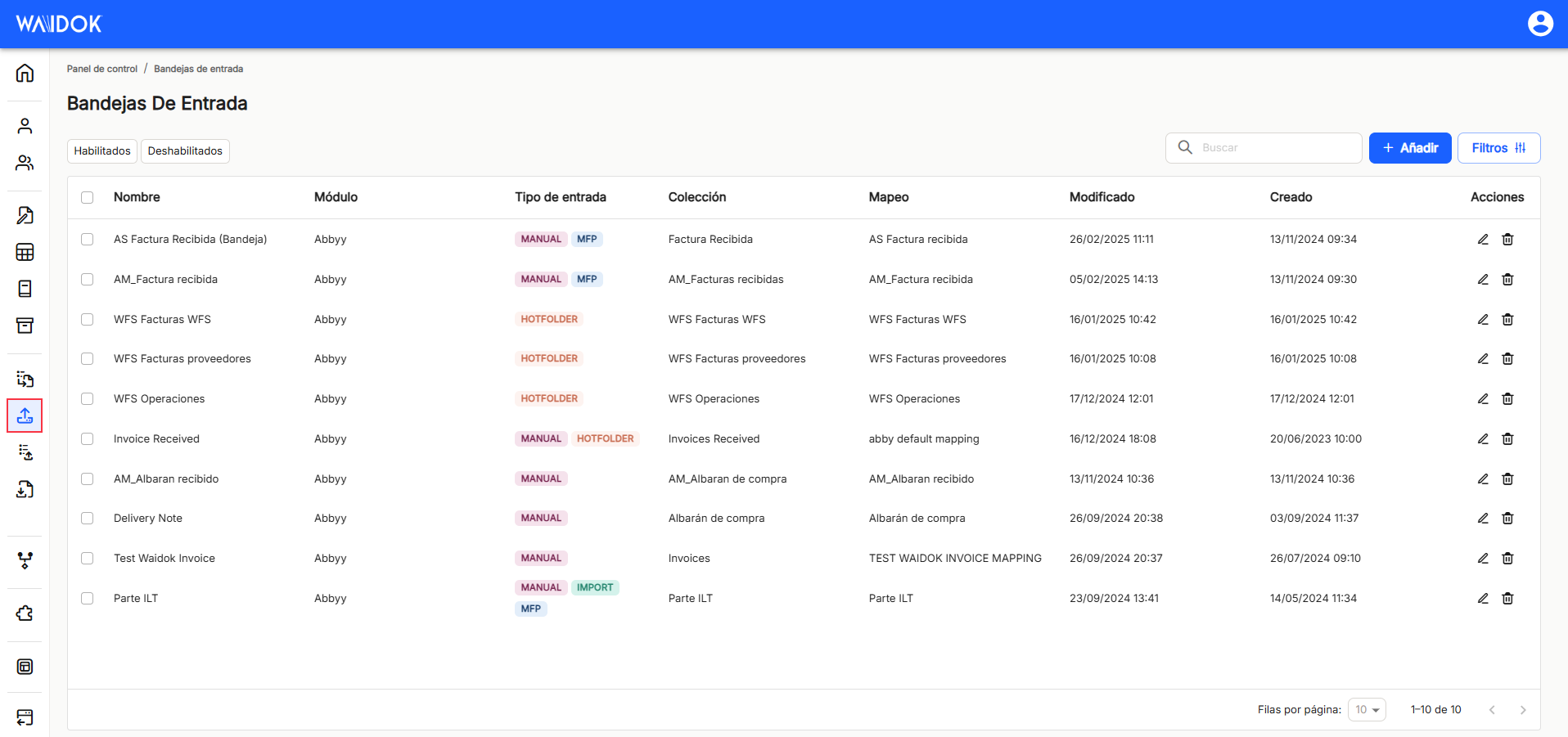
With"Add", the application displays a new subwindow to register a new inbox, where mandatory minimum fields to be filled in are required.
In the"Main data" section,"Name","Collection", "Mapping", "Module", "Color" and "Type of entry" must be entered. Likewise, this collection must be enabled or not, so that it is active and available in the system, using the switch option."Name" allows the use of free text for the naming of the inboxes.
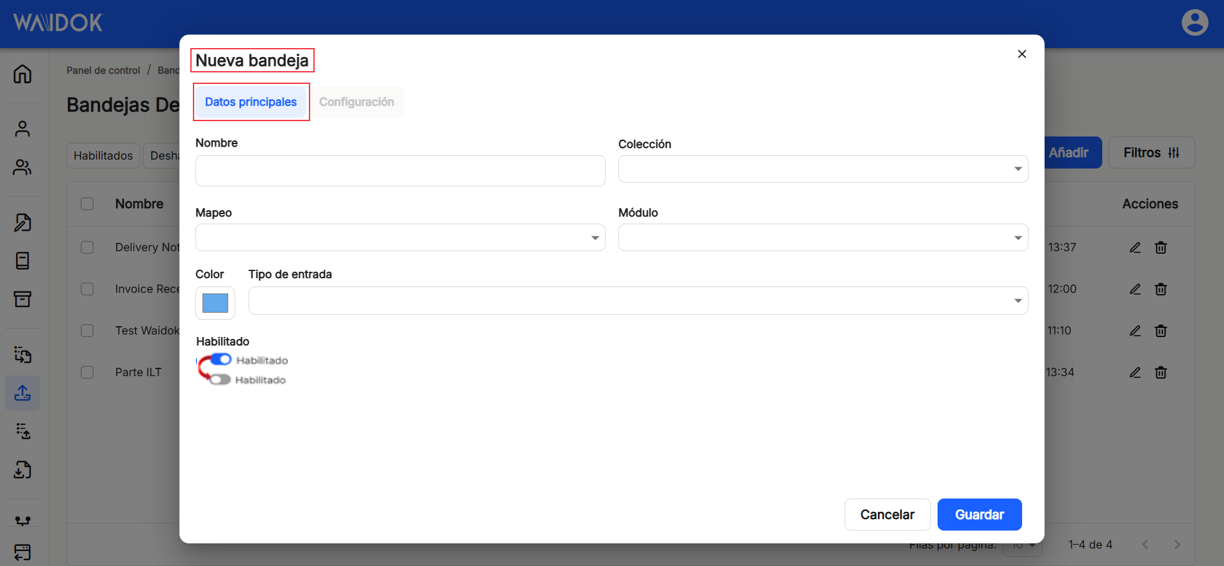
The"Collection" checkbox allows the selection of any of the collections already registered in the application, so that the documents that enter through each of the inboxes are classified in the collection indicated.
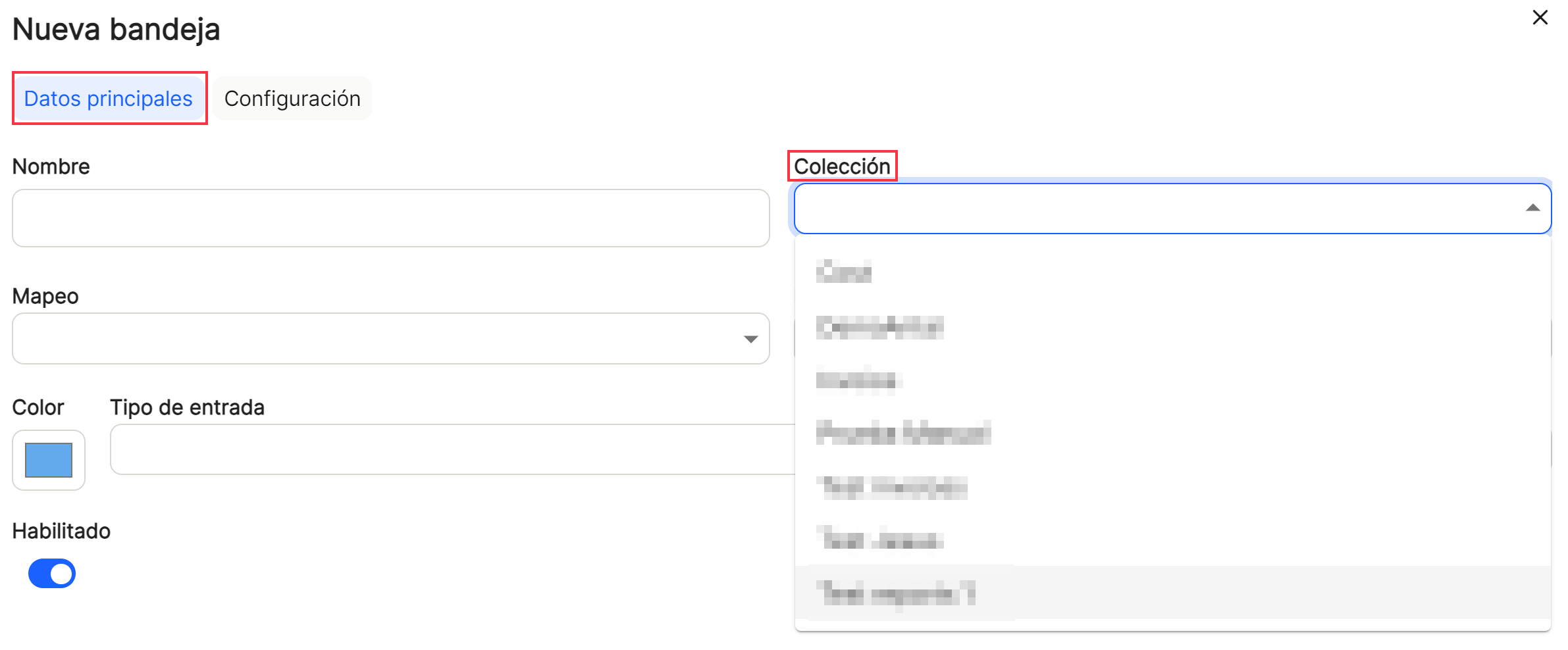
The"Mapping" checkbox allows the selection of any of the mappings that are already registered in the application, so that the documents that enter through each of the inboxes will have the conditions and properties of the mapping associated with that inbox applied to them.
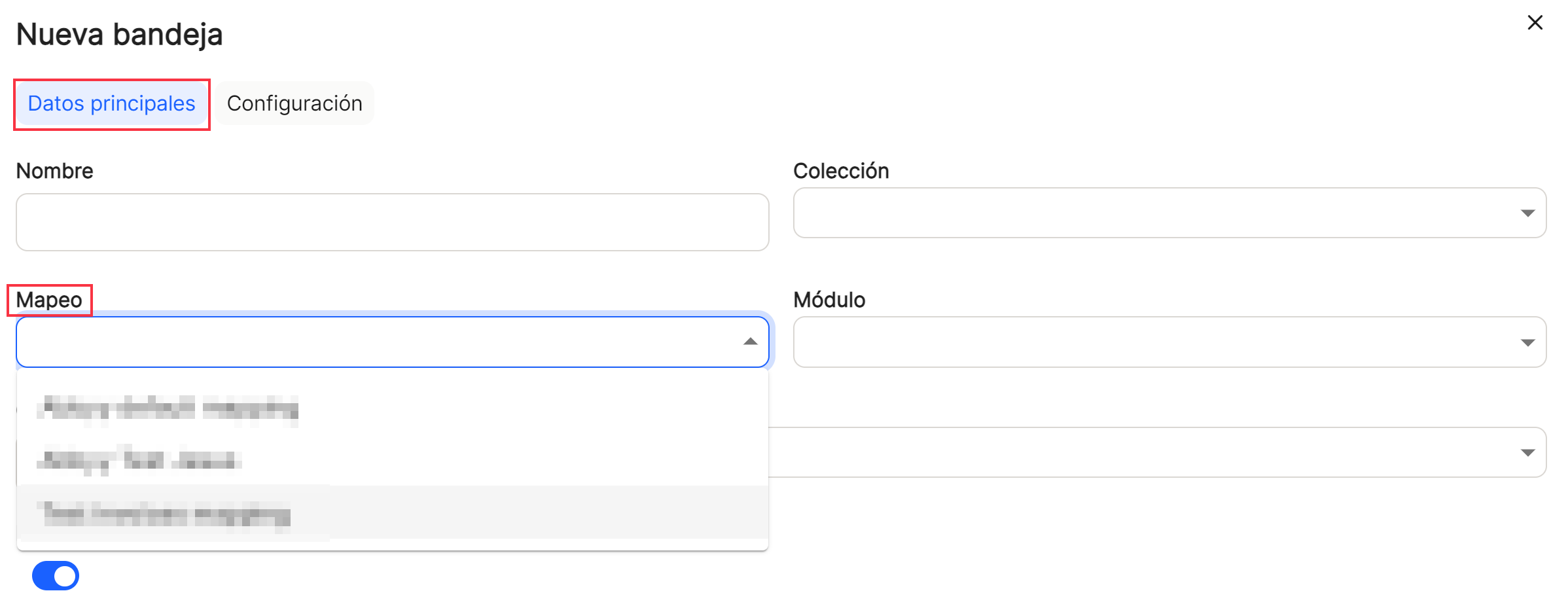
The"Module" checkbox will allow the selection of any of the modules already registered in the ABBYY application by means of the drop-down menu, so that documents entering through each of the inboxes will have the conditions and properties of the mapping to which the module is associated and to that inbox applied to them.
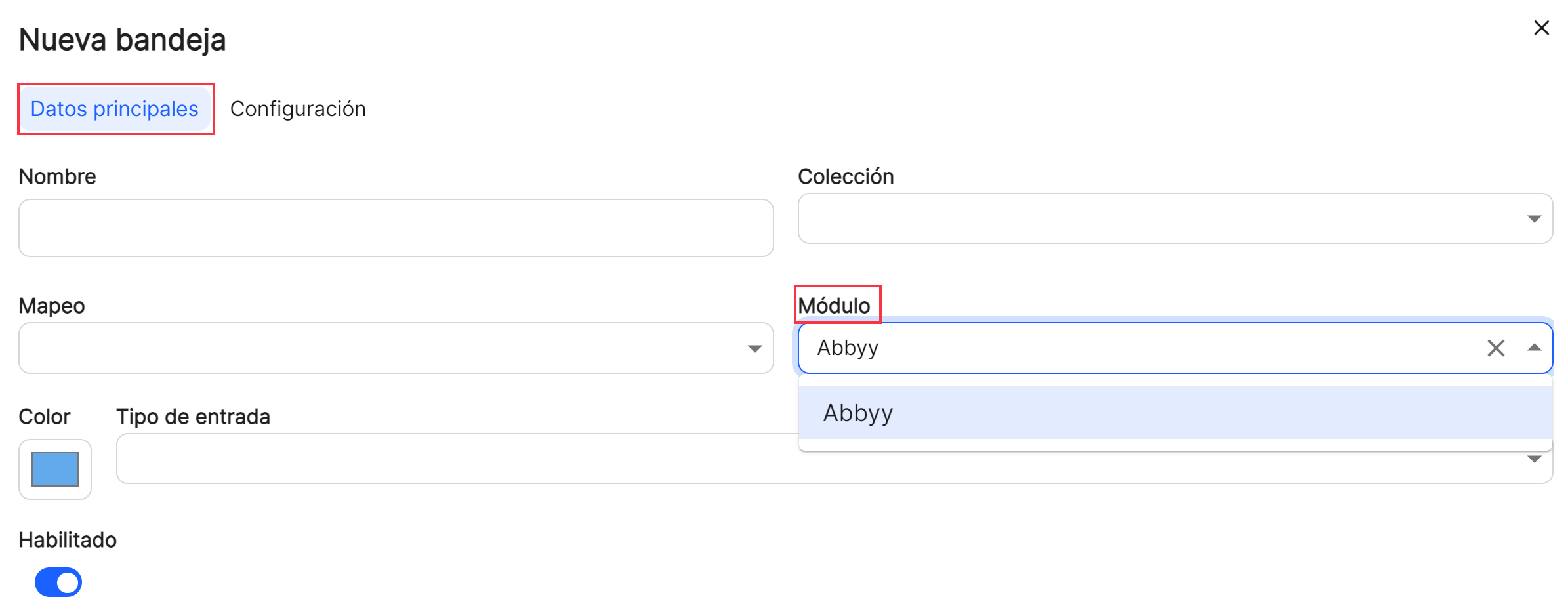
In addition, the"Color" option will allow the customization of each inbox for a better differentiation of the same in the automatic uploading of documents. By clicking on the color palette, a new Windows-style subwindow will be displayed, where you will be able to select the desired color by selecting the required shade with the mouse, which will also provide the RGB numbers (for the color palette).
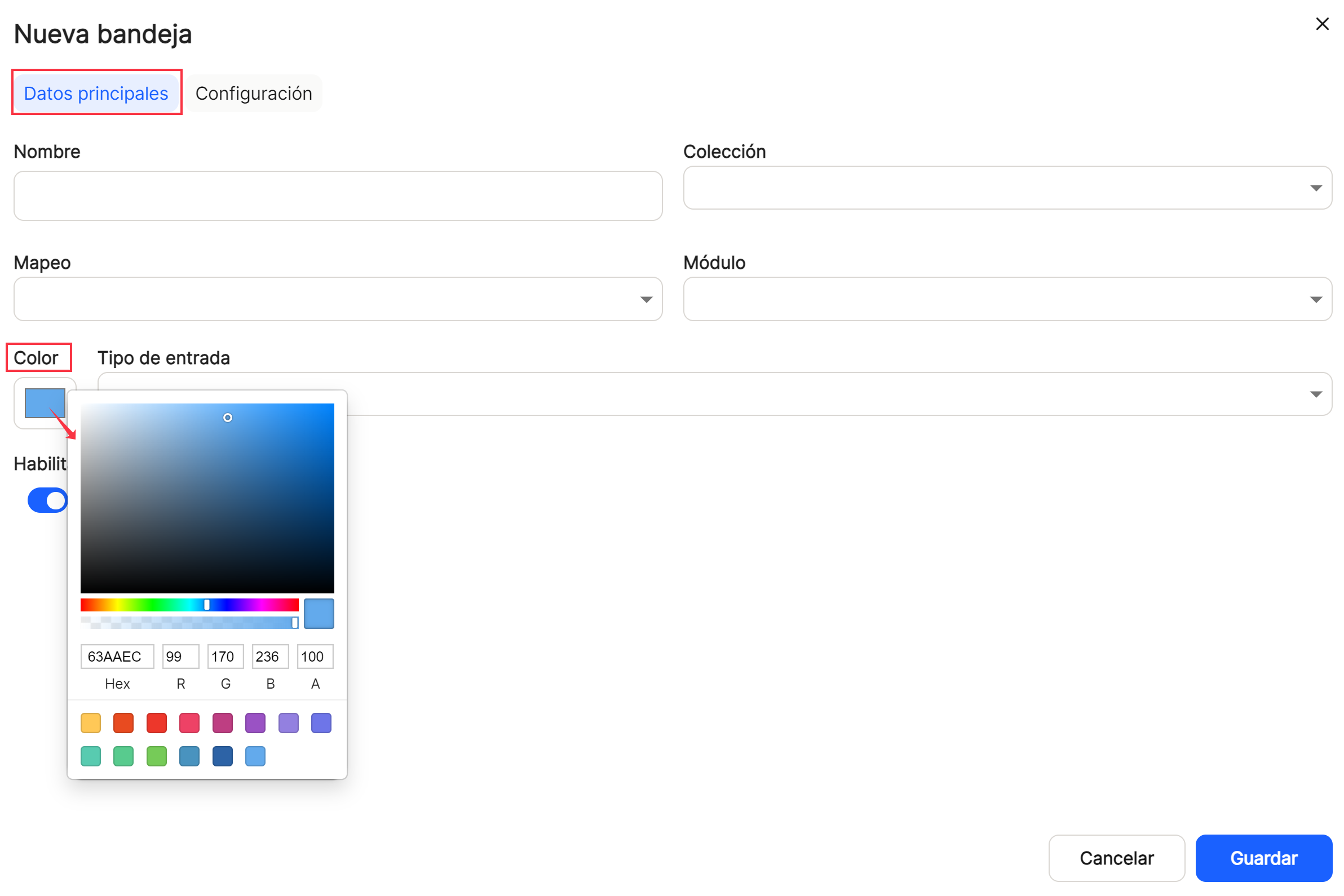
The"Input type" checkbox will allow the user to determine what type of document input will be allowed in the defined tray. The possibilities of"Manual","Scan","Hotfolder","FTP","Email" and"API" are offered. You can select all or only those that you want to enable, using the drop-down menu that opens.You can select all or only those you want to enable, using the drop-down list that opens after clicking on the arrow or on the box itself.
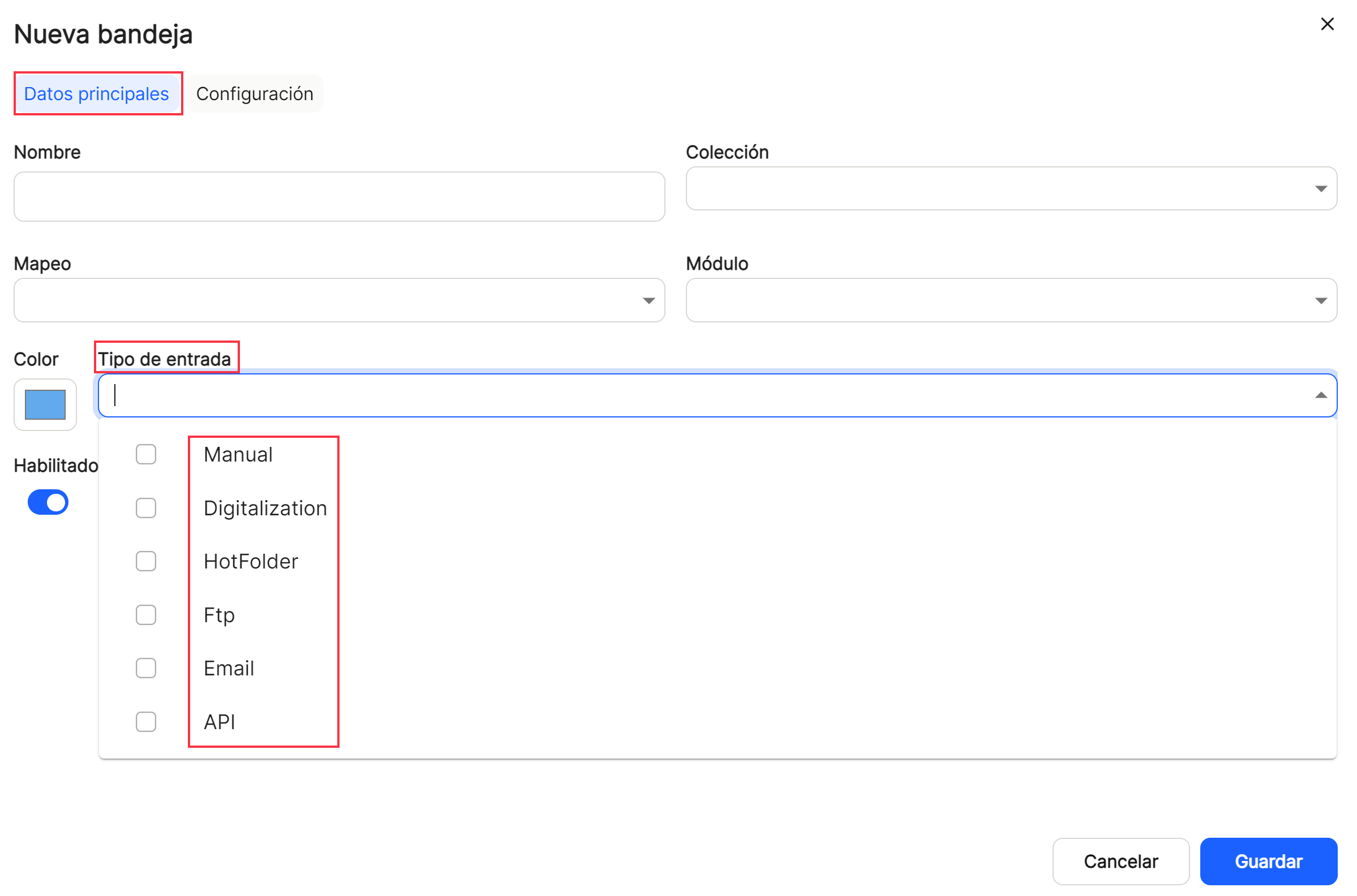
The "Configuration" tabs remain inactive and blurred in this window, since they will not be activated until the inbox with your data is saved and in the meantime they will not be displayed. To configure and fill them in, the user should edit the tab andn the column shares to be executed on the collection of that line. With the direct option to the quick access of "edit" ![]() (displays the window with the inbox data of that line and its configuration), you access the window that allows you to modify the data contained in the tabs mentioned above.
(displays the window with the inbox data of that line and its configuration), you access the window that allows you to modify the data contained in the tabs mentioned above.
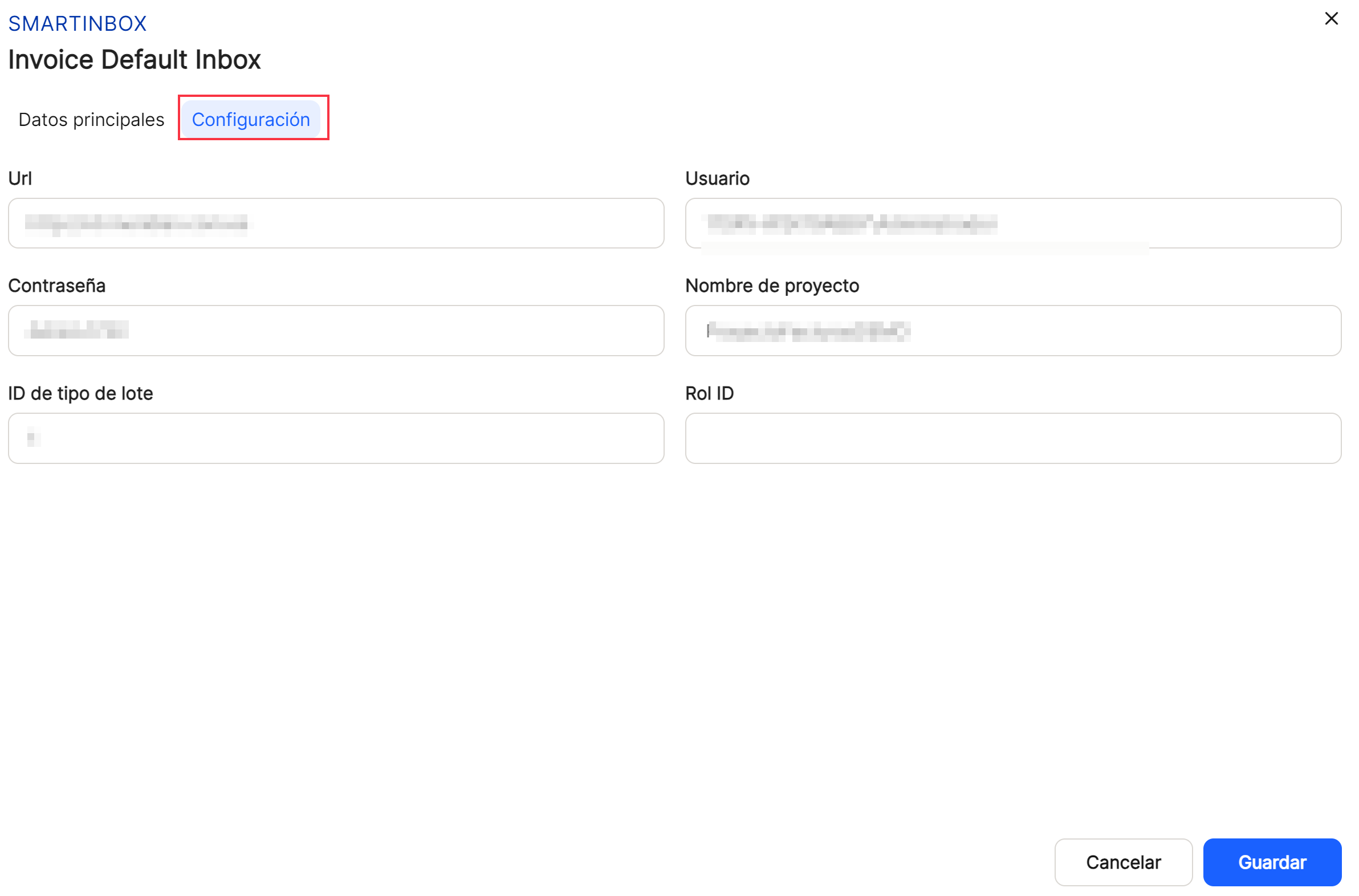
With the direct option to the quick access of "edit" ![]() (displays the window with the inbox data of that line and its configuration), you access the window that allows you to modify the inbox configuration data, which are basically network connection and storage data.
(displays the window with the inbox data of that line and its configuration), you access the window that allows you to modify the inbox configuration data, which are basically network connection and storage data.
Within"Configuration", the user will need to conform data relating to the "URL", "User", "Password", "Project Name", "Batch Type ID" and "Role ID".
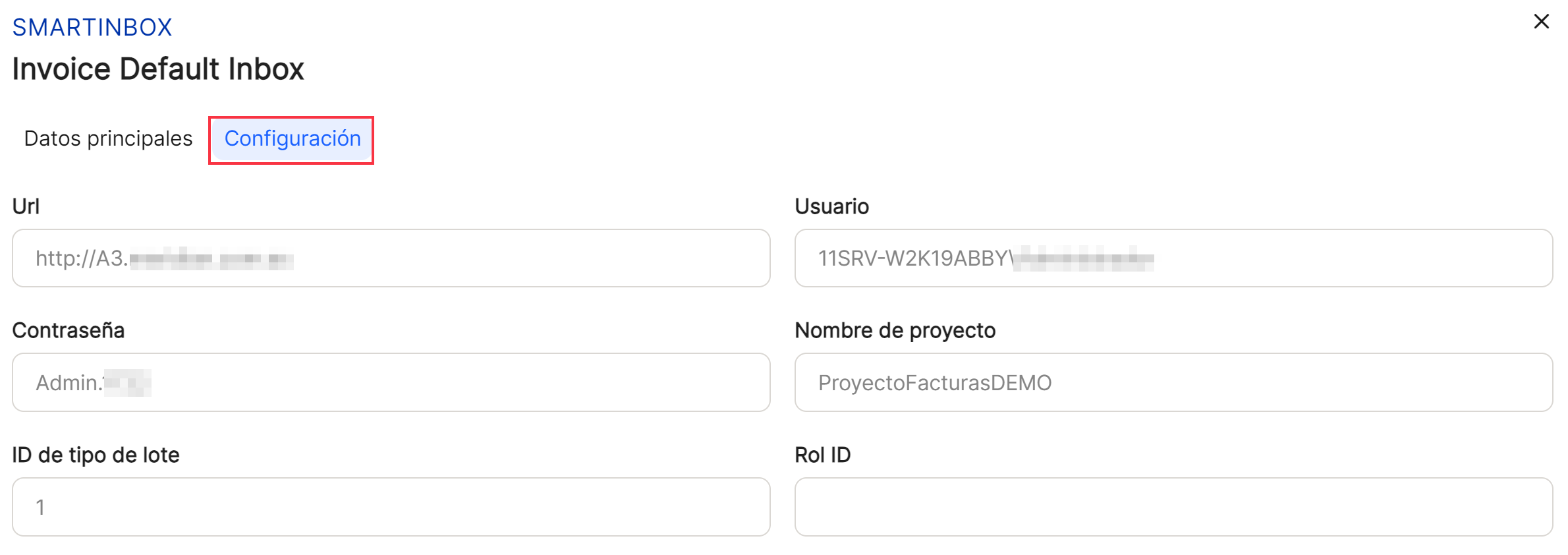
Once you proceed to"Save", you can see the list of inboxes generated in the table of that tab. Depending on whether the"Enabled" filter is checked (this is the one that appears by default when accessing the list) or"Disabled", the inboxes with this property will be displayed. In this case, the data of"Name","Module","Collection","Mapping","Last modification","Creation date" and the possibilities of direct access in"Actions" are shown. All properties will have the usual column sorting possibilities, which will be explained below, as they are always common for main and subwindows. In addition,
In all windows and sub-windows, after completing the minimum or corresponding data, proceed to"save", if you want to continue with the recording of a new property or its configuration, or"cancel", if you do not want to save.
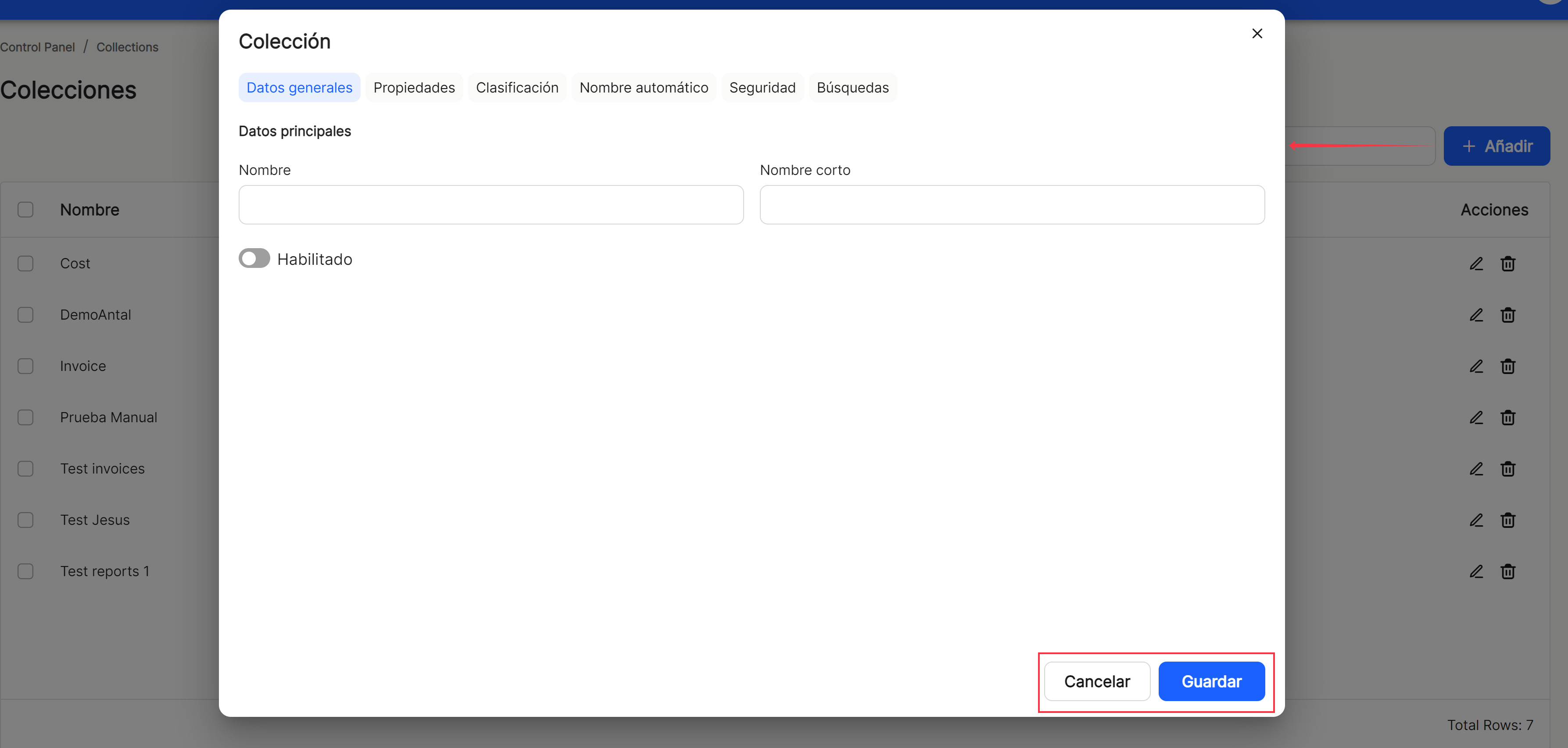
The"Filters" option allows you to display a new subwindow where you will be able to perform searches on the inboxes that have been created.

In the "Filters" window, it allows the conjunction of searches by terms, together with the status of the inboxes,"Enabled" or"Disabled", as well as the possible input types, such as"Manual,"Import", HorFolder","MFP" or"API".
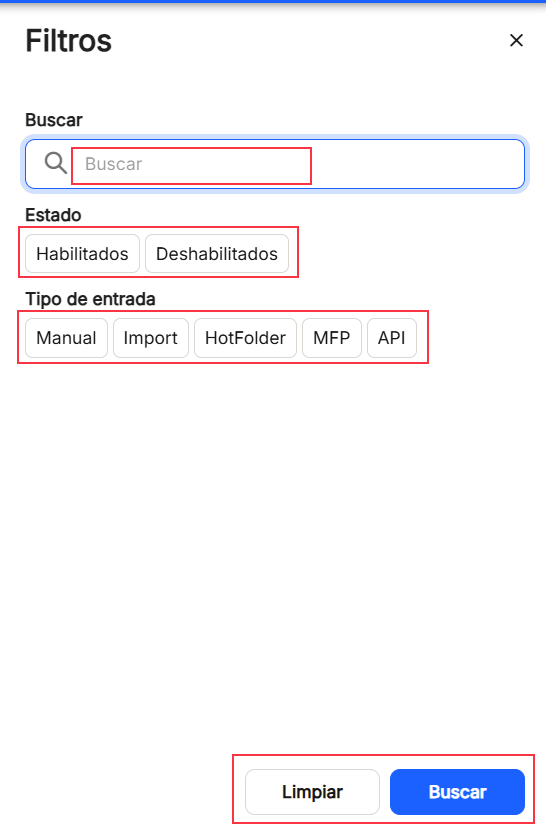
Using the"Search" option, we can locate and display in the table, those properties that contain in the"name" that string of characters.

If an item (user) or several items are selected, the application opens a submenu, which offers the"Delete" option, which deletes the selected inbox or inboxes.
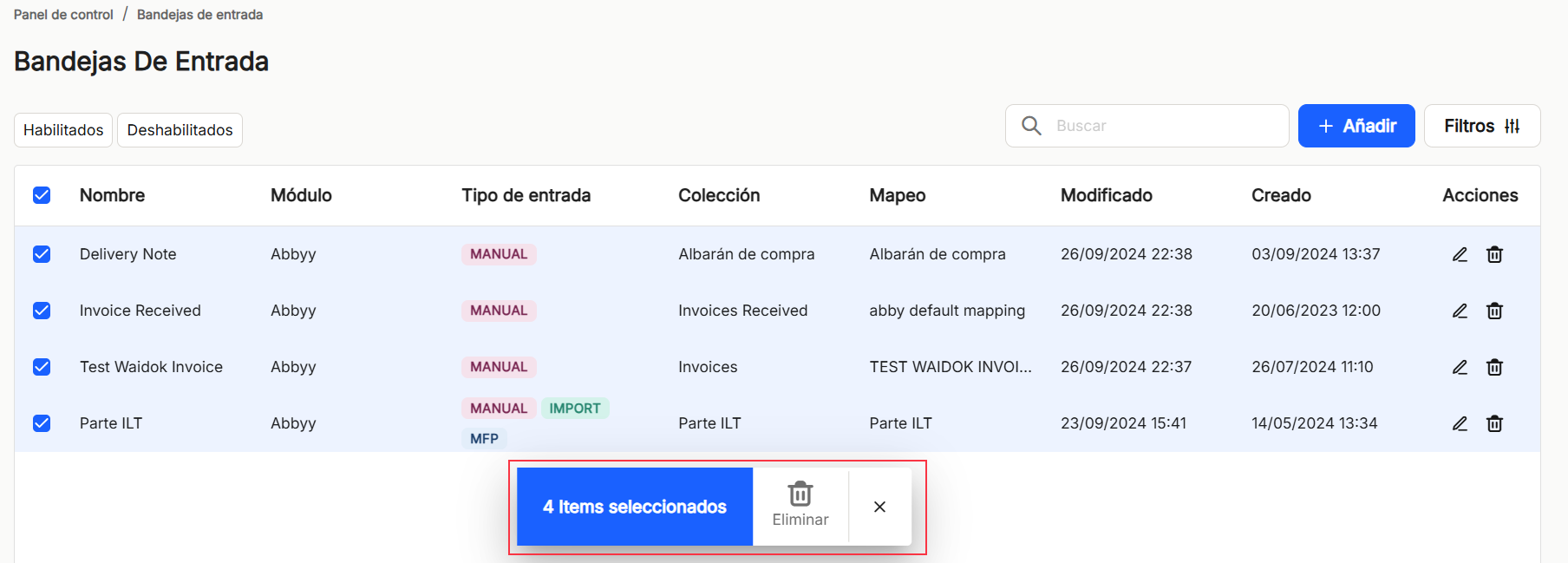
As in the rest of the sorting options of the application, when displaying a table with the list of inbox properties, it will show different columns, which will be displayed in the same way as in the other sorting options of the application.The"Name","Module","Collection","Mapping","Last modified","Date of creation" and the possibilities of direct access in"Actions" are shown. All properties will have the usual column sorting possibilities, which will be explained below, as they are always common for main and subwindows. In addition, "Shares"which contains the direct options to the shortcuts "edit" ![]() (displays the window with the property data of that line and its configuration) and "delete"
(displays the window with the property data of that line and its configuration) and "delete" ![]() .
.

Before performing any display operation, the use of the"Enabled" or"Disabled" filters must be taken into account, since they will condition the results to be obtained.

The table with the list of inbox properties will allow the visualization and sorting of the different properties shown and mentioned above. The results can be displayed in different ways using the different sorting and display options in any of the properties.
The user can sort in ascending or descending order :

You can set as many as you need on the right or left,

use preconfigured filters or add others, based on the predefined columns in the application,

and hide or manage which columns will be displayed.
These settings do not remain saved and are only applicable as long as the user is in the window displaying the task list.
With the direct option to the quick access of "edit" ![]() (displays the window with the property data of that line and its configuration), you access the window that allows you to modify all the data and parameters of the collection.
(displays the window with the property data of that line and its configuration), you access the window that allows you to modify all the data and parameters of the collection.
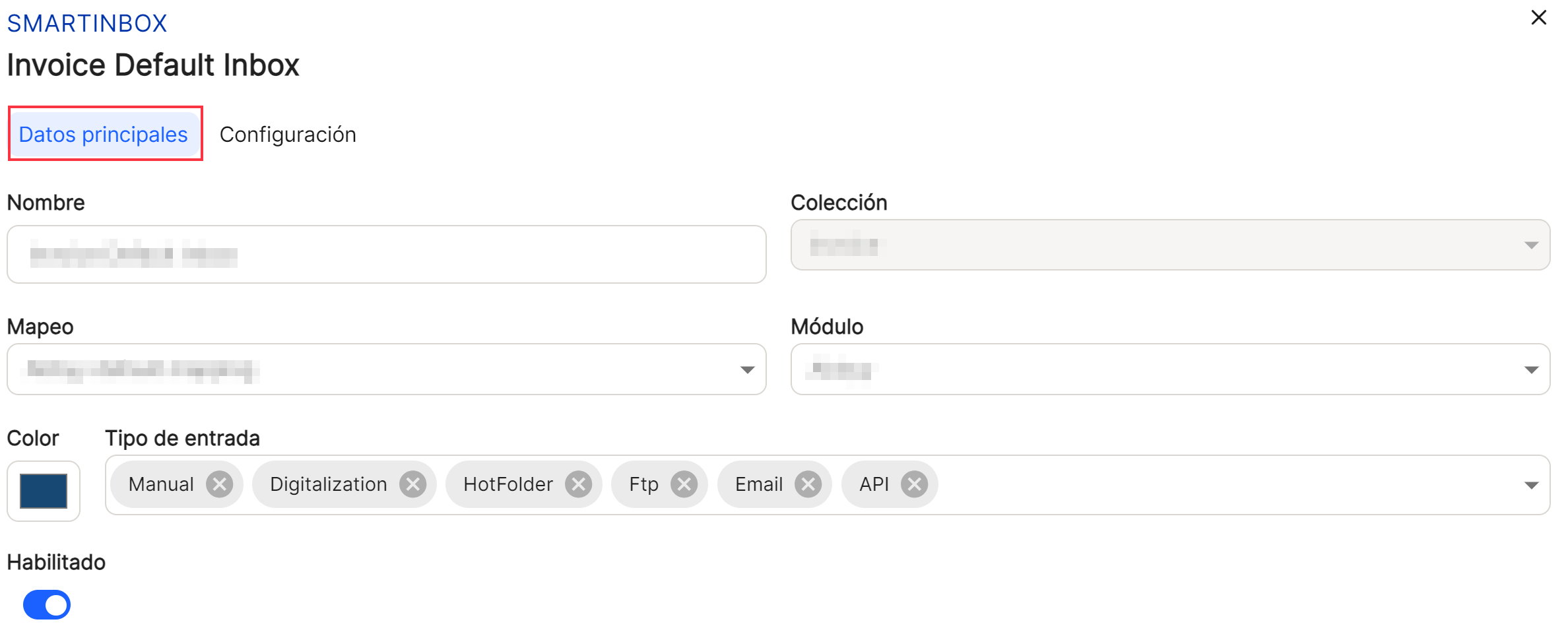
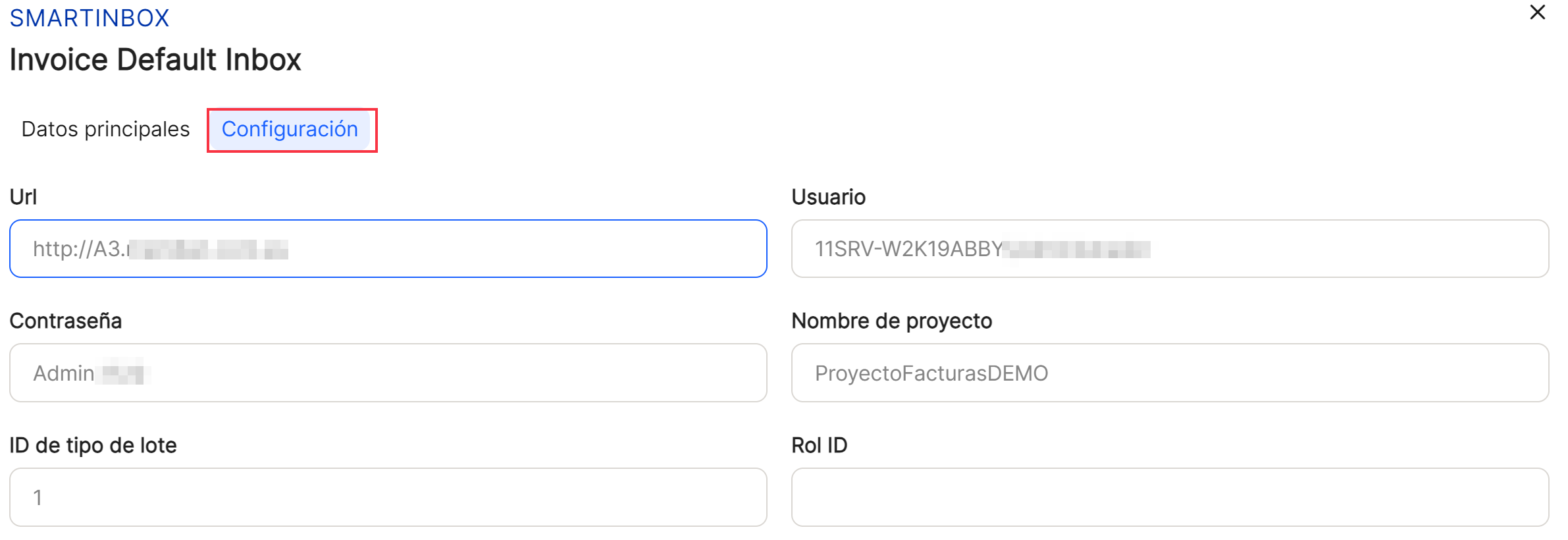
Direct access "delete" ![]() deletes the property from the application, displaying a message for confirmation or not before the action takes place.
deletes the property from the application, displaying a message for confirmation or not before the action takes place.

In the lower right part of the table, the total number of results obtained is shown, either without applying any type of search or filtering or applying any of the possible options. The system shows by default 10 lines per table and screen, allowing to show 15 lines or 20 lines per table and screen. It also allows forward or backward navigation in the displayed lists, depending on the pagination set.





No comments to display
No comments to display